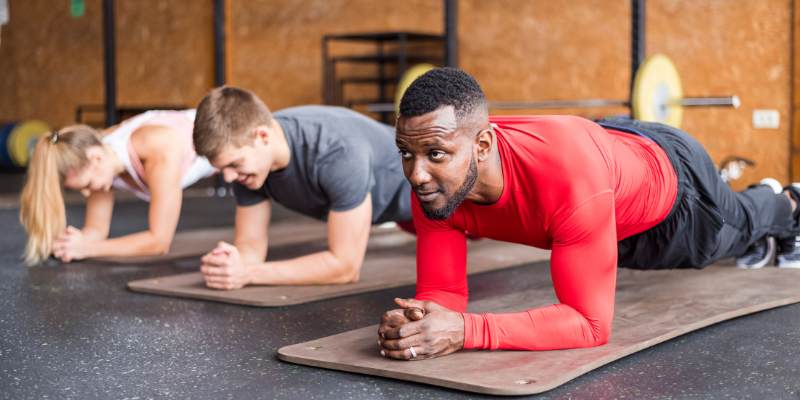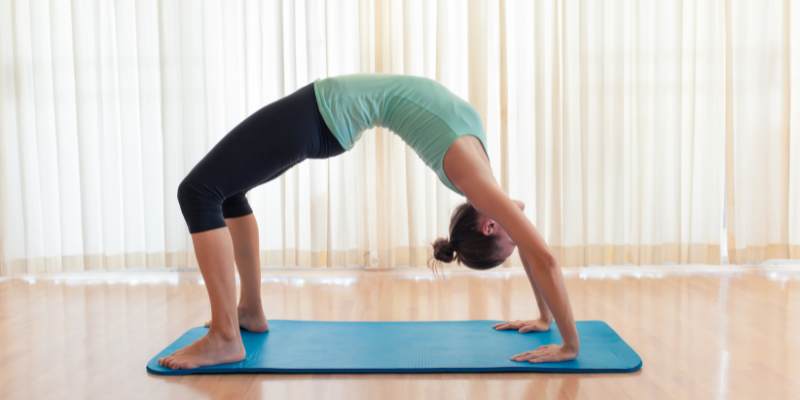Spondylolisthesis, a spinal disorder in which one vertebra slips forward over another, can result in chronic back discomfort and affect everyday living. You may control spondylolisthesis discomfort with the correct workouts while increasing your overall strength. This article provides easy yet effective activities to help you recover and relieve pain. Whether you are starting physical therapy or seeking to improve your workout routine, these exercises focus on flexibility, core strength, and stability. Take control of your discomfort now and begin your road to a more vital, healthier back with these safe, professional-recommended exercises.
Why Exercises are Important for Spondylolisthesis?
Exercises designed specifically for spondylolisthesis can increase muscular strength, enhance spinal stability, and relieve discomfort. When done regularly, they increase flexibility and core strength, both necessary for supporting the lower back. This balanced approach lowers the likelihood of future injuries, allowing for a more active lifestyle with fewer symptoms.
Key Causes of Spondylolisthesis:
- Congenital Defects: Structural abnormalities in the spine at birth can predispose people to spondylolisthesis.
- Degenerative Changes: Age-related wear and tear on the intervertebral discs and joints can cause instability and spinal slippage.
- Trauma or Injury: High-impact sports injuries and accidents can induce vertebral fractures, leading to spondylolisthesis.
- Repetitive Stress: Activities that require repetitive loading or poor body mechanics might increase the risk of microtrauma, resulting in slippage.
Step-by-Step Guide to Exercises for Spondylolisthesis:
Always communicate with a healthcare expert before beginning any new exercise plan, especially if you have spondylolisthesis, to confirm that the activities are safe for your condition.
Core Strengthening Exercises:
Core strength is required to stabilize the spine, support the lower back, and alleviate spondylolisthesis symptoms.
- Dead Bug:
- Lie on your back, arms stretched to the ceiling, knees bent at a 90-degree angle.
- Slowly drop your right arm and left leg to the floor while keeping your back flat.
- Return to the starting location and exchange sides.
- Aim for 10 to 12 repetitions on each side.
- Bird Dog Exercise:
- Begin on all fours, hands under shoulders, knees under hips.
- Extend your right arm forward and your left leg back while maintaining your back straight.
- Hold for 5 seconds, then move to the other arm and leg.
- Perform ten repetitions on each side.
- Plank:
- Lie face down, then elevate yourself onto your elbows and toes while maintaining a straight line.
- Engage your core and hold for 15-30 seconds.
- As your strength improves, aim to increase your hold time to one minute.

Flexibility and Stretching Exercises:
Stretching activities enhance the range of motion, reduce tension, and increase general flexibility, which can help with pain management.
- Child Pose:
- Kneel on the floor, big toes touching, knees wide apart.
- Reach your arms forward and place your body between your thighs.
- Hold for 20-30 seconds, then repeat three times.
- Knee-to-Chest Stretch:
- Lie on your back, knees bent, feet flat.
- Bring one knee to your chest while maintaining the other foot on the ground.
- Hold for 15-20 seconds, and then swap legs.
- Repeat 2-3 times per side.
Back Strengthening Exercises:
Strengthening the muscles that surround the spine can give extra support and help prevent future vertebral slippage.
- Bridge Pose:
- Lie on your back, legs bent, feet flat on the floor.
- Squeeze your glutes and elevate your hips to the ceiling.
- Hold for 5 seconds and then descend.
- Perform 10-15 reps.

- Superman Pose Exercise:
- Lie face down on the floor, arms outstretched in front of you.
- Lift your arms, chest, and knees off the ground while working your back muscles.
- Hold for 35 seconds before lowering back down.
- Aim for 10 to 12 repetitions.
- Reverse Leg Raise:
- Lie face down on a mat or a solid surface.
- Keep your legs straight and slightly elevated off the ground.
- Hold for 5 seconds, then lower down.
- Perform 8 to 10 repetitions.
- Wall Squats:
- Stand with your back to a wall and your feet shoulder-width apart.
- Slowly lower yourself into a squat position with your back flat on the wall.
- Hold for 10-15 seconds before standing back up.
- Repeat 8 to 10 times.
Balance and Stability Exercises:
Improving balance and stability can enhance muscular control in the spine, which can aid in managing spondylolisthesis symptoms.
- Heel Raises:
- Stand behind a robust chair and hang on for support.
- Raise your heels and balance on the balls of your feet.
- Slowly lower back down.
- Aim for 15 to 20 repetitions.
- Single-Leg Balance:
- Stand on one leg, holding onto a firm surface as needed.
- Hold for 20-30 seconds, then move to the opposite leg.
- Repeat three times on each side, progressively increasing the duration as you improve.
- Standing March:
- Standing tall, elevate one knee to hip height while balancing on the opposite leg.
- Lower the leg and repeat on the opposing side.
- Perform 1015 marches per side.
Low-impact Aerobic Exercises:
Low-impact aerobic workouts can improve blood flow, cardiovascular health, and weight management while lowering stress on the spine.
- Walking:
- Aim for 20-30 minutes of walking at a comfortable pace daily.
- Walking on flat surfaces is a gentle method to keep active.
- Swimming or Water Aerobics:
- Swimming and water-based workouts relieve strain on the spine while offering a total-body workout.
- Aim to spend 20-30 minutes in the pool several times weekly.
- Stationary Cycling:
- Cycling on a stationary bike provides a cardiovascular workout with minimum spinal strain.
- Set the resistance low to moderate, and aim for 15-20 minutes.
Tips for Safe Spondylolisthesis Exercises:
- Listen to Your Body: Stop immediately if you experience discomfort during a workout.
- Begin Slowly: Increasing the time and intensity of your workouts as your body responds. Prioritize core and lower back strength to improve spinal support.
- Avoid High-Impact Movements: Jumping, jogging, and heavy lifting can all strain the spine.
Conclusion
Treating spondylolisthesis with specific workouts can result in a stronger, more flexible, and stable back. By performing these cores, flexibility, and strengthening exercises, you may significantly reduce discomfort and improve your quality of life. Make these exercises a part of your daily regimen, and see a physical therapist if you have any issues regarding form or intensity. Do not allow spondylolisthesis to hold you back; begin working toward more excellent spinal health today.













